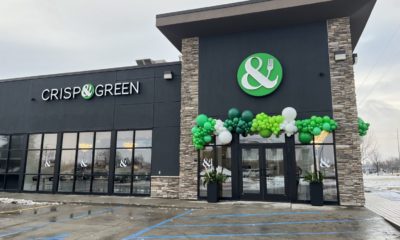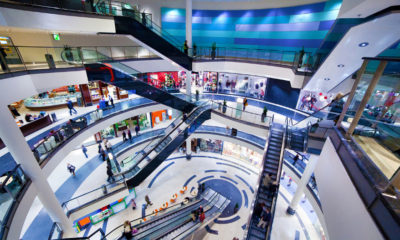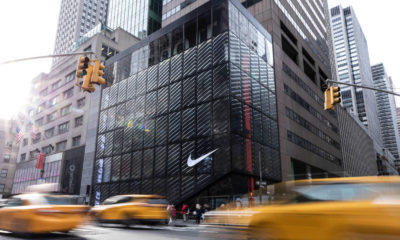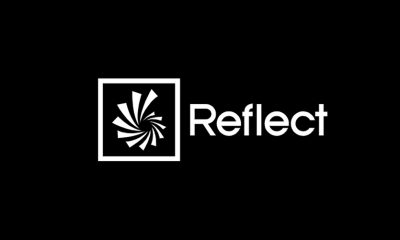True story. Not too long ago, I saw some digital menu boards that really got my gears turning. Granted, digital menu boards are quite common (nothing too special), but what got my attention was that these menu boards were smart. The content was adaptive. As I watched them, the content changed based on 1) the length of the food queue, 2) average viewing distance from the screens, and other factors. The content changed based on outside factors, and it did so in a way that improved my experience. Mind blown. A dynamic digital experience that tailored content based on external factors.
That’s the point of this article: framing the importance of content and the retail movement to make it dynamic based on various factors like shopper makeup, weather conditions, shopper behavior, and perhaps even the phase of the moon.
LET’S SET THE STAGE
When you look at up-to-date research, over 90% of all retail sales still take place in a store (source: U.S. Census Bureau). Whew. And now we’re focusing on evolving stores to be more than they once were. Consumer expectations are at an all-time high, and it’s critical to deliver prompt service, smart recommendations, and personalized experiences once they come into one of your beautifully designed stores.
One key way to create an impact is with digital experiences. As you consider store design, merchandising and consumer journeys, you’re likely already thinking about digital in some capacity. When I collaborate with designers and retailers, they’re mindful of the digital groundswell, but their thinking is typically dominated by hardware versus strategy and content. Hey, I get it. Hardware is sexy and needs to be considered when designing a store. However, the starting block to a successful digital program is strategy, and then on to content that manifests the strategy. Whether it’s brand storytelling, highlighting special offers, or acknowledging a rock star employee, the messaging and how it’s displayed is actually more important than the hardware. Ah, it feels good to get that off my chest.
Content is important. Not only is it responsible for achieving business objectives, but it needs to fit tastefully into the look, tone, and energy of the store design. When you display content on a local and personalized level, it connects with shoppers and has proven to impact sales and drive loyalty. When it all comes together, you have stronger business results and very satisfied customers. Mission accomplished!
Advertisement
TASTY FOOD FOR THOUGHT
Conditional Content
“Fact” (said in my best Dwight Schrute voice): It’s possible to change content based on info coming from various data sources. For fashion retailers, a prime example is changing promoted products based on weather conditions. Imagine promoting different shoe products … automatically … based on the weather. Or promoting heavy coats instead of athletic apparel if a cold front is coming through. By tapping into data feeds, content can automatically update without the need for resources to schedule new content.


Another fun example of conditional content is changing content based on shoppers taking specific actions within a location. For example, if a retailer has a big push to drive downloads of their mobile application, using their digital signage, they can tease a special offer for the first 100 shoppers who download the app that day (ex. receive a mobile coupon for 10% off). Mobile downloads can be tracked and content can change, displaying results real time. Check out this sample concept supporting the Mobile Strike application.

Advertisement

Lastly, you can dynamically tie into POS and ecommerce platforms to show in real time what’s trending, the most “favorited” items, and the hottest selling products. Data visualization can inspire shoppers to explore additional merchandise and hopefully increase their transaction size.
Content Shifts Based on Shopper Makeup
“BIG BROTHER IS WATCHING YOU.” A foreboding quote from George Orwell’s hit 1984. In the recent past, shoppers got antsy when it was apparent that companies monitored their habits and purchases. However, online shopping has altered our behavior and expectations. When we shop online, we now expect brands to monitor us and to make smart recommendations that fit our needs. This comfort level is now also seeping into brick and mortar, with one big stipulation – it needs to add value to the in-store shopping experience.
Here are some stats to show you I’m not making this stuff up:
-
70% of shoppers said that if they started a purchase online but then decided to go into the store instead, they would like it if store associates knew the items they had put into their online shopping cart. (source: TimeTrade)
-
“How do you feel about retailers using in-store technologies such as beacons and Wi-Fi to monitor your in-store behavior?” (source: TimeTrade)
49% – I don’t mind, if it ends up benefiting me as a customer
Advertisement
17% – I don’t mind either way
34% – I don’t like it
So, what do we do with this info? Well, using Wi-Fi, NFC, beacons, and other hardware, you can recognize an individual and personalize content. For example, a shopper can approach an in-store kiosk, and it can highlight the items they have in their online shopping cart, plus make recommendations based on their online and in-store shopping history. Retailers are starting to leverage big data, connecting the dots from online to in-store, to surprise and delight their shoppers with a truly seamless experience.

In addition to digital signage, you can use data to target shoppers on their mobile phones. For example, if you have a shopper who is dwelling in a specific department (ex. mattresses), but who has not made a purchase, you can push a special offer directly to their phone in hopes they will convert.
By using anonymous video analytics (simple camera, media player, and software required), it’s possible to tailor content based on the gender, age, and actions of your audience. I love this example executed by GMC. Using 30 video sequences, they built content for 200+ scenarios which are queued up based on the demographics and actions of the onlooker. The ultimate goal was to drive visitors to the GMC showroom. Check it out here.
This technology can also be used to make your storefront work harder. You can change content or highlight promotional messages in order to personally connect with whoever is outside your store. You can deliver the right content and call to action to entice them to pay your store a visit. This type of personalized experience helps foster an emotive connection to a brand.

Today’s shoppers love digital – they pay attention to it, remember it, and are influenced by it. Well-designed content will add to the energy in your stores, and it will also have a greater impact on your customers if it’s relevant and personalized. Let your content adapt to the shopper. Try to anticipate their needs. Remember, this competitive game we’re playing all hinges on delivering the best customer experience.
This article was written by Mason Page, EVP Strategic Business Planning, Reflect. To contact Mason, or to book him for a speaking engagement, CLICK HERE

 Headlines6 days ago
Headlines6 days ago
 Headlines2 weeks ago
Headlines2 weeks ago
 Headlines1 week ago
Headlines1 week ago
 Headlines2 weeks ago
Headlines2 weeks ago
 John Ryan2 weeks ago
John Ryan2 weeks ago
 Sector Spotlight1 week ago
Sector Spotlight1 week ago
 Headlines2 weeks ago
Headlines2 weeks ago
 NEXT UX2 weeks ago
NEXT UX2 weeks ago

























